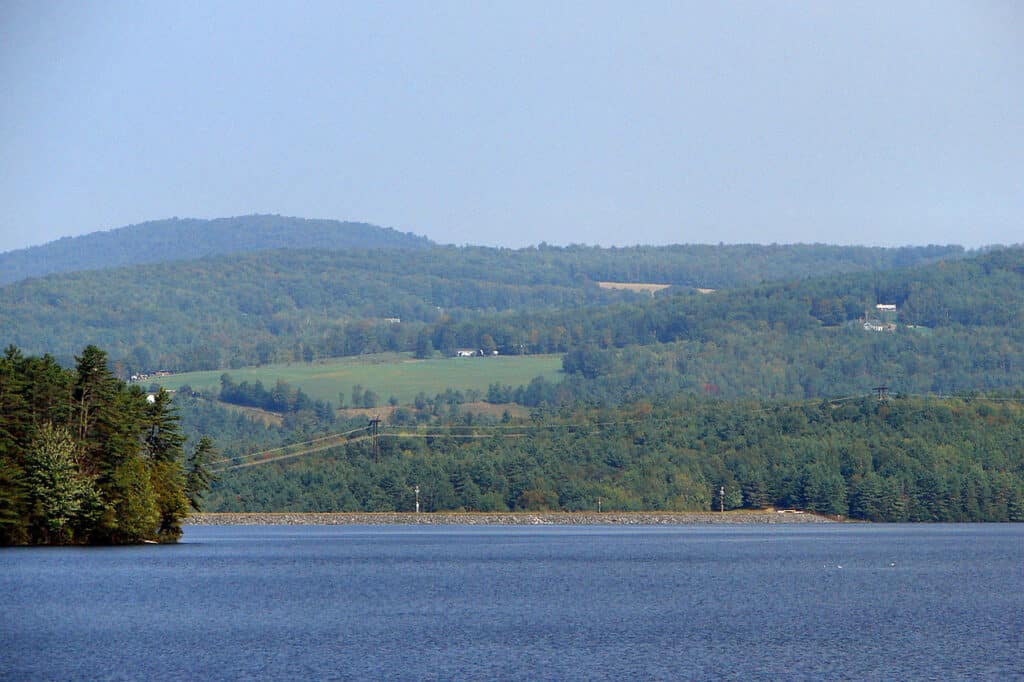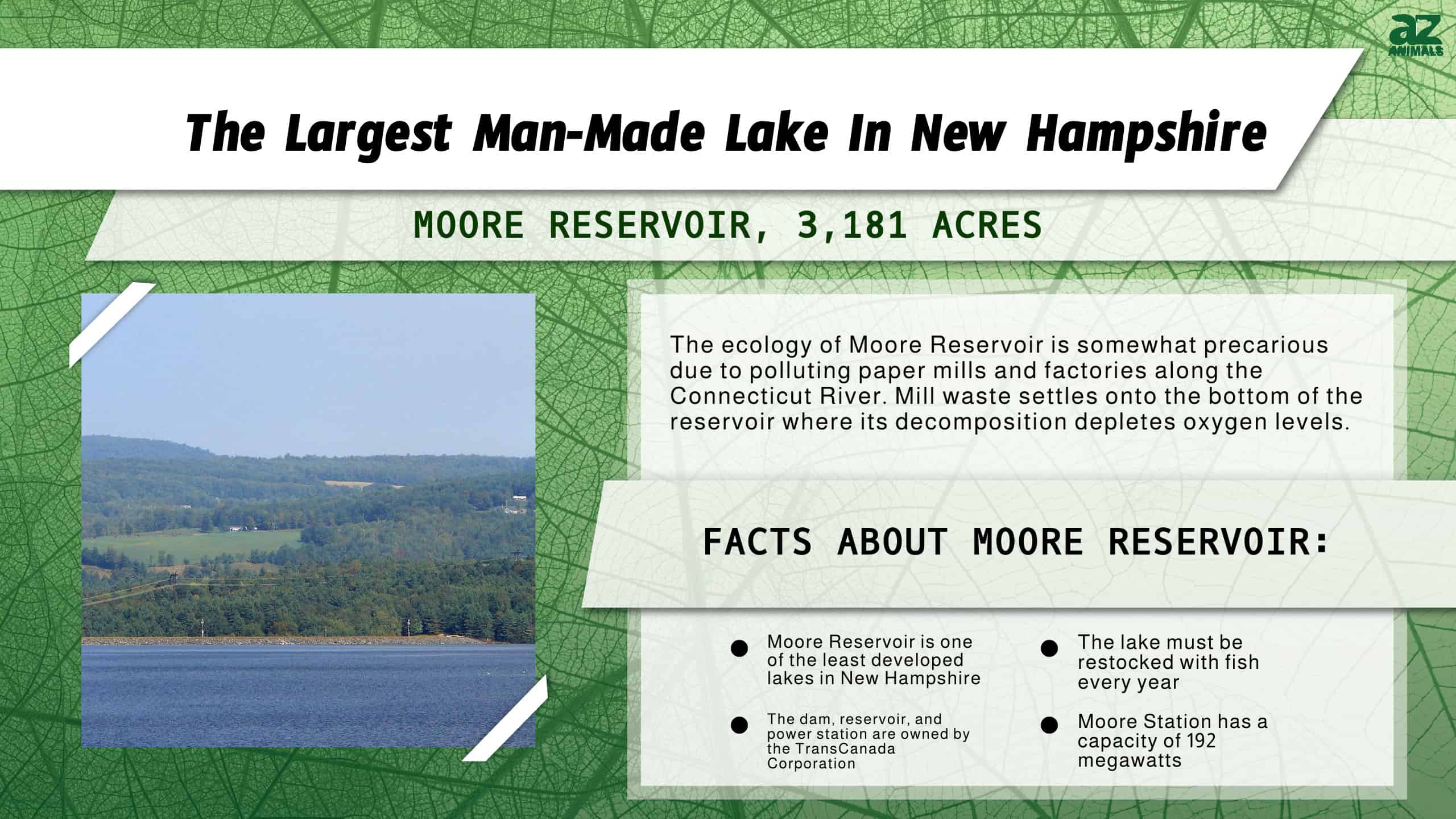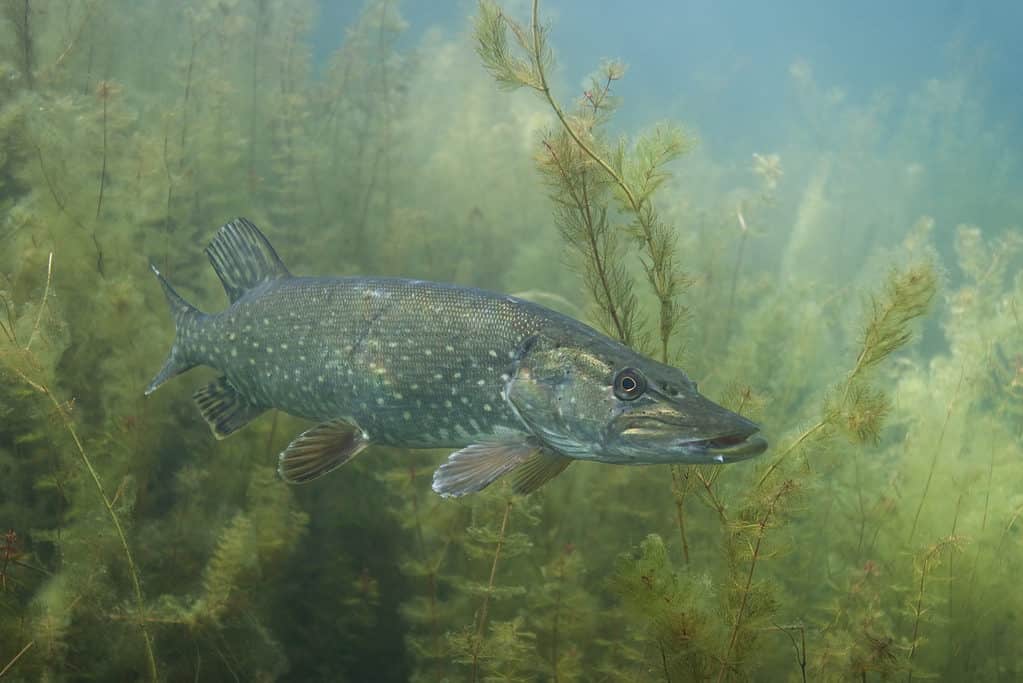New Hampshire is famous for its beautiful scenic wilderness areas convenient to its modern cities and charming historic towns. The state has a large number of lakes, both natural and man-made. The largest artificial lake in New Hampshire is Moore Reservoir. It lies on the Connecticut River, which forms the state border with Vermont. Read on to learn more about the history of this lake and some of the activities you can enjoy there.

The largest artificial lake in New Hampshire is Moore Reservoir on the Connecticut River.
©P199 / CC BY-SA 3.0 – License
History of Moore Reservoir
Moore Reservoir is a 3,181-acre body of water with a maximum depth of 120 feet. It resulted from the creation of the Samuel C. Moore Dam. The dam and reservoir were named for the former president of the New England Power Company that constructed them. Originally started in the 1930s, construction was delayed by the Great Depression and not completed until 1956. Preparation of the site involved clearing over 3,000 acres of farmland and forest. It also included the demolition of the towns of Upper Waterford, Vermont, and Pattenville, New Hampshire.
Today, the dam, reservoir, and power station are owned by the TransCanada Corporation. Moore Station has a capacity of 192 megawatts. It generates more power than any other hydroelectric power plant in New England. Unfortunately, the dam has had seepage issues from the 1980s through the 2010s that have required reconstruction and fill work. Nevertheless, the reservoir continues to function as a power source, a means of flood control, and a popular recreational area. It draws visitors from a wide area.

Moore Reservoir provides recreation for people and pets from a wide area.
©iStock.com/Guy Banville

Ecology of Moore Reservoir
The ecology of Moore Reservoir is somewhat precarious due to polluting paper mills and factories along the Connecticut River. Mill waste settles onto the bottom of the reservoir where its decomposition depletes oxygen levels. For many years, Moore Reservoir could not support aquatic life below a depth of 10 feet. This is notable, considering the maximum depth of the lake is 120 feet! This changed after some of the factories began closing and sewage treatment facilities were constructed for rural areas.
Even though the situation has improved, the lake must be restocked with fish every year. Along with the downstream McIndoe Dam, Moore Dam is an obstacle to salmon migration. The best salmon spawning areas are all upstream of the dam. Some species in Moore Reservoir are salmon, types of trout and bass, chain pickerel, bullpout, perch, sunfish, and northern pike.

Northern pike is one of many fish species stocked in New Hampshire’s Moore Reservoir.
©Martin Prochazkacz/Shutterstock.com
Recreation at Moore Reservoir
Moore Reservoir is one of the least developed lakes in New Hampshire, with very few private homes or businesses on its shores. This is great for people who want to get away from it all and have a wilderness-feeling experience within a short drive of the conveniences of local towns.
Boating
There are four boat ramps on the New Hampshire side and one just below the dam. There are portage facilities on both the New Hampshire and Vermont sides for canoeists and kayakers. It’s possible to rent boats, jet skis, wave runners, and take boat tours. Because the reservoir extends into two states, boaters need to be aware of and observe the boating and fishing laws of both localities.
Swimming
Moore Reservoir is a popular swimming spot, but because of the size of the reservoir, the water can generate waves. Sometimes you’ll also encounter floating tree trunks and other potentially hazardous debris, especially after a storm, so be alert.
Enjoying the Shore
The Pattenville Picnic Area in Littleton, NH is a secluded spot with picnic tables, fireplaces, and grills that have beautiful sunset views overlooking Vermont. There are several campgrounds within 20 miles of the lake, including Crazy Horse Family Campground, Twin Mountain Campground, Ammonoosuc Campground, and Along the River Campground & Cabins. Moore Dam also has a mountain bike trail suitable for biking or walking.
This barely scratches the surface of the things you can do at Moore Reservoir and the memories you can make there. Enjoy your adventure!
Where Is Moore Reservoir Located On A Map?
Moore Reservoir is an impoundment on the Connecticut River located in the cities of Littleton and Dalton in New Hampshire and Waterford and Concord in Vermont. It is situated 30 miles northwest of the White Mountains.
The photo featured at the top of this post is © BestStockFoto/Shutterstock.com
FAQs (Frequently Asked Questions)
What is the largest man-made lake in New Hampshire?
The largest artificial lake in New Hampshire is Moore Reservoir on the Connecticut River, which forms the state border with Vermont. It covers 3,181 acres and is 120 feet deep at its maximum depth.
What can you do at Moore Reservoir?
Fishing is good at Moore Reservoir. The lake is stocked with salmon, several types of trout and bass, chain pickerel, bullpout, perch, sunfish, and northern pike. Boating is popular and it is possible to rent boats, jet skis, and other equipment for watersports. Swimming, picnicking, hiking, camping, and mountain biking are also popular.
Is there a lot of development around Moore Reservoir?
No. The land around the lake is mainly owned by TransCanada, but the company permits public access. There are few private homes or businesses on the lake itself, but you can find amenities in communities a short drive away.
Thank you for reading! Have some feedback for us? Contact the AZ Animals editorial team.







